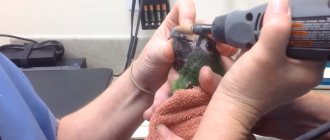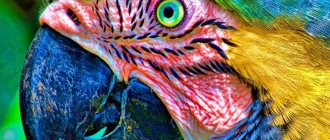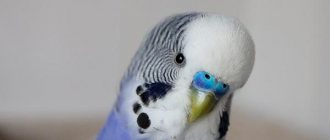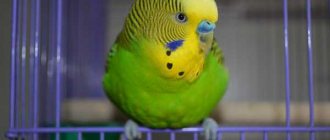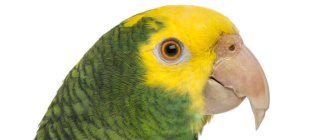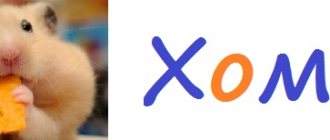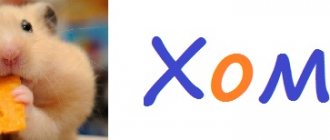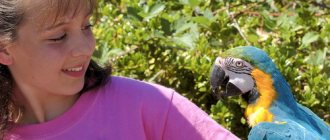A parrot's beak performs many different functions. With its help, the bird eats food, cleans its plumage, builds a nest and communicates with its fellow birds. Sometimes it can grow too long and cause a lot of inconvenience to its owner. And if in the natural environment the bird usually dies, then by keeping it at home it can be helped.
Let's figure out why a parrot's beak grows and what to do in such a situation.
The structure of the beak of a budgerigar
The beak is formed from horny tissue covering the jaw processes. The mandible consists of three bones, the cup-shaped mandible consists of several small bones. The nasal structure is attached to the skull by a special tendon; this ligament allows the budgerigar to move its beak. The bird does not have teeth, so it does not chew food, but grinds it. For this purpose, there are grooves on the inner surface of the mouth. The fleshy tongue pushes the crushed food into the throat.
During the life of a parrot, the stratum corneum constantly grows at the base, moves to the tip and replaces those areas that have worn out. All damage, cracks, chips disappear over time. In a healthy parrot, the upper part of the beak is completely replaced within six months, the lower part is replaced a little faster, since it is much smaller. It happens that a bird gets a severe bruise and a broken beak, then it needs to be carefully trimmed.
The parrot uses its beak confidently, but carefully: it can forcefully beat off pieces from a mineral stone, but it extracts small seeds from berries very carefully and delicately.
How to perform the grinding procedure?
Take a small nail file with medium or minimal hardness for small parrots, and with a higher hardness (such as for artificial acrylic nails) for larger parrots (such as cockatoos). Take the bird in your hands and place it comfortably on your lap, after placing a soft bedding on its feet. Fix the bird's head between your thumb and forefinger so that you can easily work with the beak. Grind down the edge of the beak, first on one side, then on the other, using the same movements as filing your nails.
The bird should be held gently but firmly, as it will struggle and scream. You should not pay attention to the bird’s screams and twists. Calmly grind down the beak.
How to trim your beak correctly
To painlessly trim a parrot's beak at home, follow the instructions:
- Disinfect sharp nail scissors, clippers, and nail files with alcohol. Have cotton wool and hydrogen peroxide on hand in case of injury.
- Turn on bright lighting. During the day you can sit near the window.
- Invite someone to help you. You cannot cope with such an important event alone, especially for the first time.
- Examine the beak under a beam of light. You will see thin blood vessels through the membrane. Draw a boundary that you cannot cross.
- While a helper holds the bird in both hands, use scissors to gradually trim off the excess edge. It is unacceptable to make sudden movements, or remove most of the cornea at once, otherwise it may burst.
- If the horny part is very hard and cannot be cut with scissors, use nippers. They need to be handled very carefully so as not to pinch off too much.
- Treat the cut with a manicure file. File the tip carefully, being careful not to get it in the parrot's eyes. After such grinding, there should be no nicks left on the beak.
- At the final stage, moisten the edges with a solution of potassium permanganate - this is the simplest way to neutralize microbes.
If you were unable to trim the beak without damaging it and blood appears, apply a cotton swab moistened with hydrogen peroxide to the wound. The bleeding will stop.
The parrot may feel pain, discomfort, and fear during manipulation. When finished, calm the bird down. Do not feed for several hours, but make sure there is fresh water in the drinking bowl. Leave your pet alone for a day, let him recover from the stress he suffered.
You can’t do it without proper dexterity and a steady hand: uncoordinated actions and anxiety will only hinder you. If you are not sure of a successful outcome, ask a specialist to carry out this delicate procedure. A veterinarian or an experienced breeder will help alleviate the bird’s condition and at the same time talk about the nuances of the operation and subsequent care.
Bird beak correction
What to do with a parrot's very long beak? Of course it needs to be trimmed. Otherwise, it may grow to such an extent that the bird cannot feed without outside help.
How to trim the beak of a wavy bird correctly.
When cutting the cere, extreme care must be taken.
Minimum parts of it should be cut off. It is better, if necessary, to correct the corners later than to cut off too many pieces of the beak and cause unique harm to the feathered pet.
It is worth understanding that there are blood vessels in the bird’s beak, so it is important to be extremely careful. You will need nail clippers or small scissors, as well as a good nail file.
After cutting off the limbs of the beak, the cut points must be carefully filed down. If you doubt that you will be able to trim the cere correctly, it is better to seek help from a specialist.
The role of the beak for a parrot
The beak only in appearance seems hard, stone, lifeless. This is a sensitive organ of touch; it helps the bird to sense heat and cold, touch, and the shape of objects. Also, with the help of its beak, the budgie performs the necessary actions:
- crushes and grabs food;
- cracks nut shells;
- cleans and smoothes feathers;
- combs out parasites;
- builds a nest (loop);
- carries objects;
- climbs trees or cage bars;
- turns eggs;
- feeds the chicks.
The beak is needed not only to ensure the life of the parrot. It has another important purpose: this attribute of appearance serves to intimidate opponents. Defending territory, the bird screams furiously, bites and plucks feathers from its opponent.
Why trim the beak?
The beak is an extremely important organ for birds. The parrot uses it for many things:
If a parrot has a long beak, it will prevent it from performing all the activities of life. The parrot will not be able to eat normally, its physical activity will decrease, and the condition of its plumage will worsen. This ultimately leads to illness and, in advanced cases, death. In addition, the bird can be injured by growing its beak while performing hygiene procedures. To prevent this from happening, you should trim the beak on time.
Main reasons for growth
Wild birds in nature are not limited in their movements. They move freely: they run a lot, climb trunks, cling to branches. Such vigorous activity has a good effect on the condition of the claws and beak, which wear down naturally. At home, budgies stay inside a cage for days, and many of the pleasures of their free relatives are not available to them. Inexperienced breeders sometimes cannot understand why a parrot's beak grows quickly. And this comes precisely from an imposing lifestyle and cramped conditions.
It’s good if the owner does not forget about fresh twigs and sepia, which the pet needs so much. If the cage only has a wooden perch, your budgie may try to sharpen its beak by rubbing it against the perch or bars. This load is not enough to control the length of the beak: it begins to grow, bends and breaks off.
The main factors influencing the rapid growth of the stratum corneum:
- consumption of feed with mineral supplements;
- enhanced vitamin supplementation;
- metabolic disorder;
- liver problems;
- hormonal disbalance;
- congenital disease;
- malocclusion due to injury.
The bird can be cautious and take care when it feels painful. The fragile, brittle cornea grows and becomes deformed when it is infested with mites.
If you notice that the parrot is experiencing discomfort, help it - shorten its beak, otherwise the bird will not be able to eat properly. There is nothing wrong with cutting your hair, but you should be well prepared for this event to avoid unpleasant consequences.
Reasons why the beak may grow
Congenital diseases
Beak deformities of this origin, unfortunately, often cannot be treated. However, the bird will most likely be able to live with her. Growing up, the parrot will learn to fully saturate itself and drink water. But due to impaired mobility of the beak, it is unlikely to imitate human speech. Such a pathology will also interfere with normal breathing. Such a creature is not as active as its healthy brothers and sisters and does not fly well. Therefore, its lifespan may be limited.
One of the reasons for the rapid growth of the beak is a congenital disease
Trauma, fracture
Sometimes, having caught on something with its beak, the parrot injures it, from which the body, in defense, forms various growths on the surface. This situation should be prevented by promptly lubricating the wound with a bactericidal agent - for example, an aqueous solution of chlorhexidine.
In case of a fracture, of course, you need to contact a veterinarian.
Parasites
The beak may lengthen or become covered with growths on the cere near the eyes, as well as on the skin of the paws. This happens quite often, and occurs due to the bird being infected with parasitic mites. In this case, external insecticidal agents such as aversectin (novertin) ointment are used. The drug is considered to be of low toxicity for animals; it is applied to the affected areas several times a day, then taking a break of five to seven days.
Parasites can also cause rapid beak growth
Growth on the beak of a budgerigar
Knemidocoptosis
This disease is caused by an arthropod parasite invisible to the human eye - the scabies mite. For the time being, it can live on the bird’s body and not cause any trouble. It is quite difficult to notice him at this time. As the pest multiplies, it begins to infect the paws, skin and beak of parrots. Growths on the latter are considered as a middle stage in the development of the disease. The organ affected by mites becomes lumpy, rough to the touch, increases in size and bends downwards.
Treatment after the tests can only be prescribed by a veterinarian, since the main item on the list of necessary procedures is considered to be the destruction of the causative agent of the disease. In addition, you should thoroughly sanitize the bird house, including all accessories. A specially selected menu and improved living conditions for the parrot should help improve its immunity. Important! Newly acquired birds should be kept in home quarantine.
Even if she was visually healthy when purchased, you cannot be sure that the pathogenic organism has not already settled on her body.
Knemidocoptic mange causes a growth on the beak of a parrot
Therefore, keep the new tenant separate from the rest of your pets for at least a month. It is even advisable that his cage be in another room.
Hyperkeratosis
This is a condition that affects the cere, a strip of hardened skin above the beak. It darkens and thickens, sometimes blocking the breathing holes. At the same time, the surface of the beak may also change, especially at the edges. The difference between hyperkeratosis and parasitic or infectious diseases is that the affected tissues do not fester, do not have wet discharge, and do not cause painful itching in the bird.
This malaise occurs due to a lack of vitamin A in the body. In nature, the parrot receives this substance in the form of carotenoids (or provitamin A). They are found in red, orange and yellow fruits, as well as in the leaf parts of some plants.
Hyperkeratosis also provokes a growth on the parrot's beak
This explains the method of getting rid of this scourge. Offer your bird:
- pieces of red bell pepper;
- slices of ripe tomatoes;
- sticks of peeled and washed carrots;
- other brightly colored fruits and roots;
- green leaves – primarily lettuce and dandelion.
Important! With an abundant addition of fresh feed, the rate of the grain mixture is reduced by 20-25%. So, it is better to reduce the daily dose of 2 teaspoons for an adult parrot to 1.5.
Prevention
It is quite possible that an attempt to trim a budgerigar's beak will be unsuccessful. Having had a negative experience, you are unlikely to want to return to this process in the future. The parrot itself is capable of limiting the length of the horny growth, obeying natural instinct, but for this it needs to create all the conditions. You can avoid forced circumcision by turning to proven methods:
- fix a mineral stone in the cage, which the bird will peck, erasing the stratum corneum;
- regularly add oat grains to the food; their coarse husks polish the beak quite well;
- offer your pet freshly cut twigs so that he can gnaw and peel off the bark;
- adjust nutrition: remove fertilizing, increase the amount of raw vegetables.
The beak compensates for the parrot's lack of arms and teeth, which is why it is so important to monitor its condition. A beak that is too long and a beak that is cut too short are two extremes that should be avoided. It is not so difficult to reduce the length without radical measures, but there are also ways for advanced cases. Just don’t be afraid to help the bird - it trusts you and expects care.
Treatment
Let's summarize all the measures you can take in case of excessive beak growth and neoplasms on it.
A classic case of a tick (Knemidocoptes mutans) on a call in a budgerigar
- If the cause of the disease lies in a parasitic infection, this organ should be lubricated with an ointment based on aversectin.
- Lack of vitamins and minerals requires finding imbalances in the diet and correcting them.
- An overgrown beak can be trimmed. True, this procedure is unpleasant neither for the parrot nor for its owner, so it should be prevented if possible.
- With an injury, if it is serious and threatens the bird’s life, it is better to consult a specialist.

